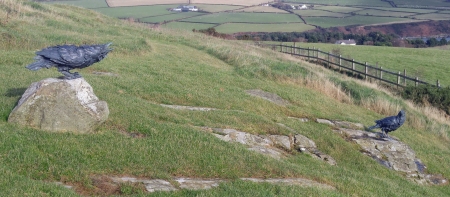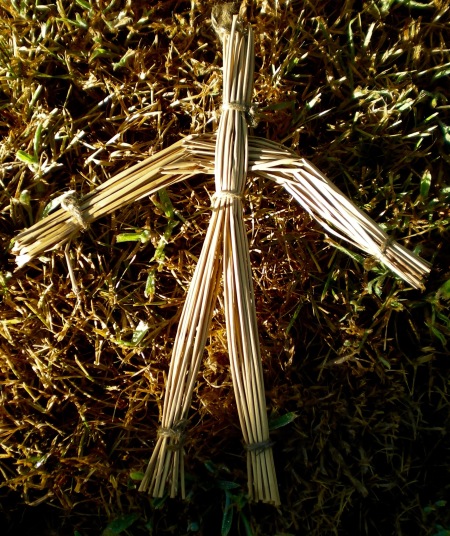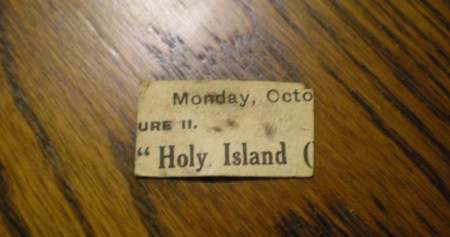In advance of Sauin, I undertook a pilgrimage to several of the important sites sacred to the traditional witches in my Line on the Isle. I had several purposes in mind for my undertaking:
To rekindle the light of connection with those places and spirits bequeathed to me by my Ancestors and my Beloved; to carry the relics of my Departed Love to the place where she had brought the relics of her Initiator following his death; to bathe the tokens of remembrance which have been made to honour the Mighty Dead in the waters of the Isle, those lustral waters which had sanctified Them in life; and to bring back physical concretions embodying the Spirit of the Isle and the Line to share with those Brethren who remain among the Quick and who have undertaken the responsibility to carry on the living manifestation of the Daemon of our Lineage.
My journey was bracketed by tremendous storms – initially, the first hurricane to touch the Isle in thirty years, which delayed my arrival, and later another significant storm which had the same effect on my departure. The prevailing winds and rain made quite conspicuous the fact that the time I spent at each site was consistently temperate and dry.
My time, abbreviated as it was, was spent doing the physical things which were required at each site. Action embodied prayer and intent, and action completed then moved on to the next site upon my pilgrim’s path. With imminent changes to arrival, itinerary and departure, my intentions to connect with specific people on the Isle were thwarted, reinforcing the theme of pilgrimage – my connections were with places, and spirits, and ancestors. It also truncated my time there, and that meant extended periods in meditation or ritual at each site were not possible.
Kirk Michael, Kirk Malew, and Kirk Patrick all contain memorials to ancestors of my Line. I paid respects at each, caring for the two sites that were not being maintained by others on the Isle.
The keeil that had been used by the traditional witches for initiations was a place I had been told of, and had seen in a photograph, but had never visited. Finding it, and walking in the footsteps of my forebearers as I made my circuit around and into it, imagining the rites as they were performed in those days; feeling the place and the numen bestowed there, was a potent boon.
From there I proceeded to the Heart of the Isle, the most sacred place in the Manx Witchcraft Tradition, to offer the relics of my Beloved, and commit them to that place and the Power there, as she had done years earlier with the ashes of her initiator. Water and stones I carried back from that place, in remembrance, and to share among the brethren who do not live and practice on the Isle.
I wandered the Sound, under very different conditions and clime than the last time I had been there. Gale force winds and torrential waves meant I had to keep a safer distance from the clifftops and beaches, but I did descend close enough to secure some slate pebbles for the risting of runes.
In the north, the clouds and winds vanished, and I ascended to the Castle of the High Place amid dazzling sunshine and picturesque views of the rolling green hills and whitewashed houses. En Route, and at a stop at the neolithic cairn at Ballafayle, I was delighted to come upon bronze sculptures of a pair of ravens which I had not seen before, installed quite beautifully and sensitively into the landscape.

Physically walking the Land again feels like priming the engine prior to Sauin. I return to my home just in time to harvest the last potatoes from the garden, and move the mandrakes and tropical daturas indoors under lights, before celebrating the Ancestors and divining the upcoming year, and sharing the stones and stories of the Manx Traditional Line with my brethren.
As we move into the dark and the cold, and the Work makes the transition from Land to Hearth, as the veils thin and we glimpse beyond and draw inspiration to direct and carry us through the winter, may we find solace and strength in the memories of our Ancestors, and the company of those who share the celebration with us.













